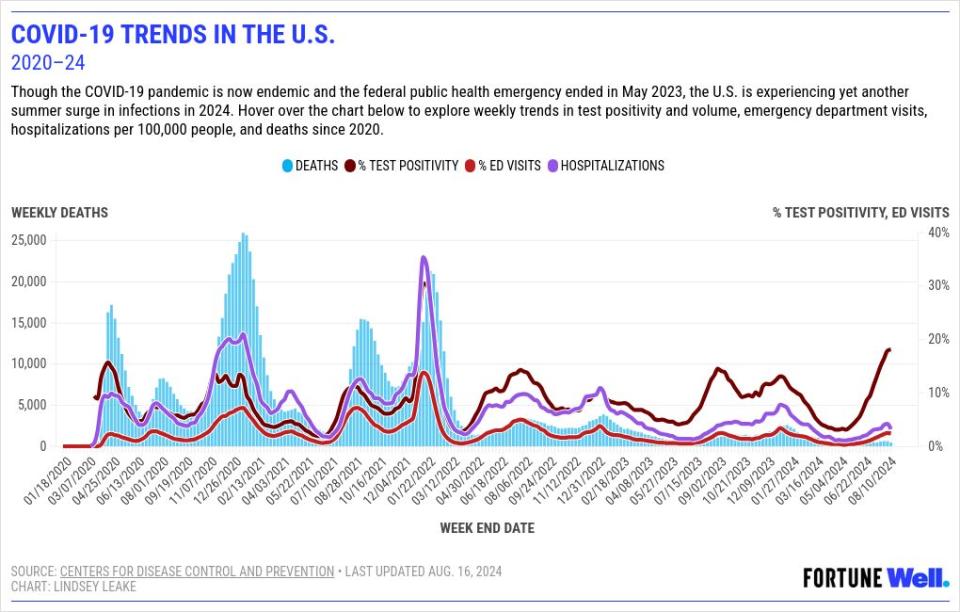I was sure it was just a summer cold. I’d developed a sore throat one evening in late July, halfway through my family vacation. Next morning came the headache and runny nose. By the trip’s end, I felt a bone-deep exhaustion at odds with the week of seaside relaxation I’d just enjoyed.
I’d had a rough bout of COVID in 2022—to the point of requiring chest X-rays, and being prescribed a steroid and an inhaler—and this latest illness didn’t feel nearly as severe. I’d worn a mask during air travel and was up to date on my vaccinations. Only when my symptoms had not only failed to improve but also worsened after nearly a week of taking over-the-counter cold medicine did I consider it could be COVID after all.
An at-home test confirmed I’d been struck by the summer surge plaguing the country. (And, ironically, I would write an article about the swelling wave of infections the same week I tested positive.) But my recent diagnosis reinforced two COVID tenets: testing is the only way to differentiate between respiratory illnesses such as COVID, the flu, the common cold, and respiratory syncytial virus (RSV); and coronavirus symptoms can manifest differently in the same patient upon reinfection.
COVID symptoms can be mild, severe, or nonexistent, according to the Centers for Disease Control and Prevention (CDC). Keep in mind that symptoms can appear as late as two weeks after you’ve been exposed to SARS-CoV-2, the virus that causes COVID.
New variants of the virus continue to come and go; the FLiRT class of Omicron subvariants raged over the summer, while a subvariant called XEC is poised to dominate this fall. The CDC says symptoms may vary by variant, but hasn’t tied certain symptoms to a specific variant.

What are the symptoms of COVID?
While not an exhaustive list, the CDC encourages the public to watch out for these symptoms:
In addition, the World Health Organization highlights these less common symptoms:
Which COVID symptoms require emergency care?
The CDC recommends seeking emergency medical care if you have these symptoms:
-
Inability to wake or stay awake
-
Lips, skin, and nail beds that appear pale, blue, or gray
-
New confusion
-
Persistent pain or pressure in the chest
-
Trouble breathing
How do I treat my COVID symptoms?
If your symptoms are mild, over-the-counter pain relievers such as ibuprofen and acetaminophen can help most people feel better, the CDC says.
While prescription antiviral medications such as Paxlovid (nirmatrelvir with ritonavir) or Lagevrio (molnupiravir) are geared toward patients at high risk of severe infection, that doesn’t mean you’re only eligible if you have a condition like cancer or HIV. The CDC considers having asthma, overweight or obesity, or certain mood disorders, for example, as risk factors for severe COVID infection.
As soon as you test positive for COVID, discuss your treatment options with your health care provider.
For more on COVID-19:
This story was originally featured on Fortune.com

